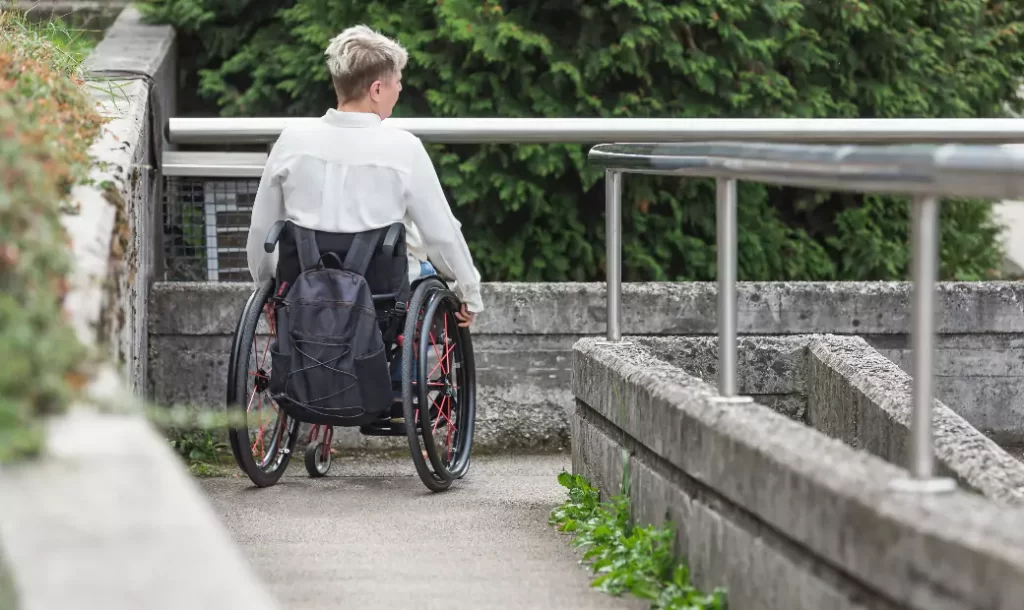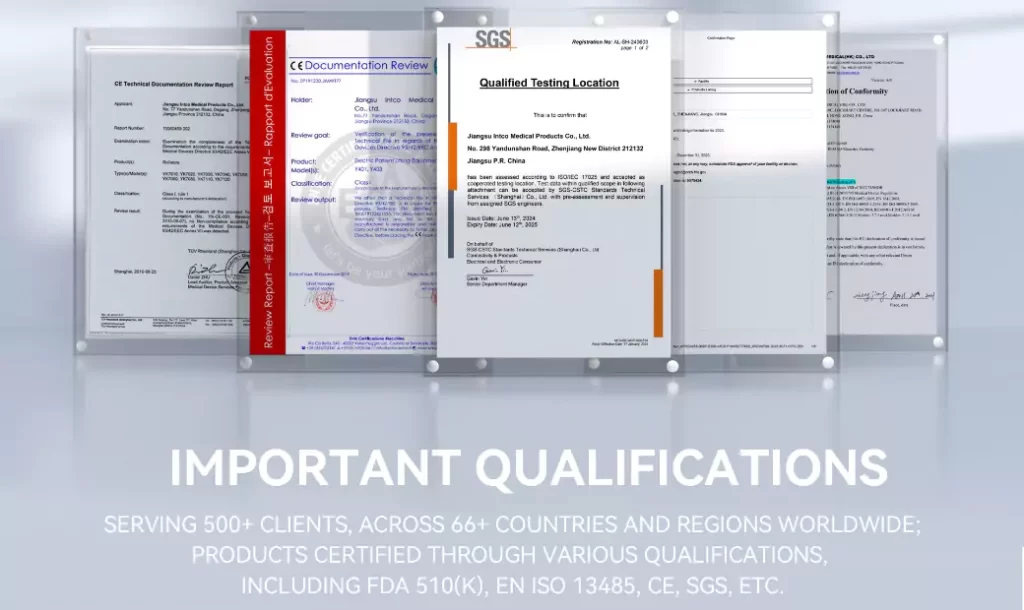Contact Us
Innovation and Accessibility: The Dual Drivers of the Modern Wheelchair Market
2025-10-29
Introduction
In today’s evolving healthcare and mobility-aid landscape, the global wheelchair market is being shaped by two powerful, interlinked drivers: innovation in design and technology, and a persistently increasing demand for accessibility across demographics and geographies. For B2B stakeholders — including distributors, healthcare institutions, and OEM partners — understanding these dual forces is essential for aligning product strategy, market entry, and long-term growth.

Market Overview: Growth and Accessible Demand
According to recent industry reports, the global wheelchair market size was valued at approximately USD 5.10 billion in 2024 and is projected to reach around USD 10.76 billion by 2032, exhibiting a compound annual growth rate (CAGR) near 9.8%. Another research source estimates a global market size of USD 4.8 billion in 2022 with projection to USD 8.4 billion by 2030 (CAGR ~7.2%).
This growth is underpinned by several factors, including aging populations, rising prevalence of mobility impairments, expanding home-care settings, and greater mobility expectations among users. For example, manual wheelchairs continue to dominate unit volume in many markets, while powered and specialty wheelchairs are growing faster in value terms.
From an accessibility perspective, markets are being shaped not only by end-users (persons with mobility impairments) but also by institutional buyers (hospitals, rehabilitation centres, senior living facilities). Demand for products that support inclusive environments, barrier-free access and compliance with regulatory standards is increasing.
Innovation: From Materials to Smart Systems
Innovation in the wheelchair market takes multiple forms:
-
Materials & Portability: Lightweight frames (aluminium, carbon fibre), fold-and-transport designs, modular components. These meet growing demand for mobility devices that can be easily handled in home, travel, and institutional contexts.
-
Ergonomics & Adjustable Features: Adjustable seat height, backrest angle, armrests, anti-tip wheels, quick-release components. These enhance usability across diverse users and usage scenarios.
-
Smart Systems & Power Assist: Battery-powered motors, tilt & recline functions, sensor systems and connectivity (increasingly). For example, the powered wheelchair segment generated USD 593.1 million in 2024 and is expected to reach USD 847.6 million by 2030 (CAGR ~6.2%). (Grand View Research)
-
Design for Accessibility & Multi-scene Use: Design choices are increasingly informed by how users engage in different scenarios (home, outdoors, rehabilitation) and by infrastructure requirements (ramps, corridors, transport). In short: innovation is not just about adding technology, but about making mobility easier, safer and more inclusive.

Accessibility: Mainstreaming Mobility
Accessibility — the ability for users to engage freely with their environment using mobility aids — is no longer a niche concern. It is now mainstreamed. For B2B participants, three accessibility-related realities are important:
-
Demographic Shifts: Aging populations in developed and emerging markets mean more users need mobility solutions.
-
Institutional & Regulatory Context: Healthcare providers, senior residences and public infrastructure increasingly require compliant mobility aids that fit within accessibility frameworks.
-
User Expectations: Users expect more than basic mobility — they expect devices that support independence, comfort, multi-scenario use (indoor/outdoor), transportability, and integration into life.
As such, accessibility becomes a dimension of product specification, not just a regulatory checkbox. Products need to meet real-world usage demands.
Market Opportunities for B2B Stakeholders
From a B2B perspective, the interplay of innovation and accessibility opens several strategic opportunities:
-
Product Differentiation: Suppliers who offer models with features like foldability, lightweight frames, modular design and smart assistive functions can differentiate in a crowded market.
-
Segmentation by Setting: Home care vs institutional vs rehabilitation centres require different features. Institutional buyers often prioritise durability, modular servicing and lifecycle cost; home-care buyers may prioritise ease of transport, aesthetics and adjustability.
-
Geographic Growth: While North America and Europe remain significant, the fastest growth may come from Asia-Pacific and emerging markets where aging populations and demand for mobility aids are rising. (Precedence Research)
-
Collaborative Offerings: Partnerships with healthcare providers, service organisations and infrastructure planners (for barrier-free solutions) can expand the value proposition beyond the device itself.
-
Lifecycle & After-Sales: Maintenance, modular upgrades, retrofit options (for example, converting manual to powered assist) can become value drivers.
How Innovation + Accessibility Shape the Product Roadmap
Surely, the dual forces of innovation and accessibility should shape product development and market strategy. Some key implications:
-
Adjustability as Standard: Rather than optional add-ons, features like adjustable seat height, back-angle, armrest height and anti-tip wheels become baseline — meeting both user-comfort and institutional safety requirements.
-
Modularity and Serviceability: For large-scale procurement (hospitals, senior living), products must allow spares, servicing, upgrade paths (e.g., from manual to powered assist).
-
Lightweight and Foldability: For home care, transport between rooms, vehicle transport, storage in smaller dwellings — mobility aids must “disappear” into life rather than dominate it.
-
Smart Assistive Integration: Even in manual wheelchairs, sensor-based monitoring (for instance of seat load, movement patterns) may increasingly become part of premium offerings.
-
Accessibility-Certified Design: Suppliers should ensure compliance with relevant accessibility standards (ramp clearances, door widths, etc.), and build partnerships with infrastructure and facility planners to deliver turnkey mobility-accessible solutions.
-
Global Scalability: Because growth is fastest in regions with rising aging populations and infrastructure expansion, suppliers need to optimise cost-structure, manufacturing scale and distribution logistics.
Challenges and Strategic Considerations
Of course, there are market challenges and B2B buyers should remain vigilant:
-
Price Pressure: As manual wheelchairs dominate unit volume, price competition is fierce — brands must find differentiation beyond just cost.
-
Supply Chain / Manufacturing Constraints: Lightweight materials (carbon fibre, advanced aluminium alloys) raise cost and may complicate service networks.
-
Regulatory Complexity: Markets vary in reimbursement, certification and accessibility regulations — global buyers must ensure compliance (CE, FDA, ISO 13485 etc.).

-
User Diversity: Mobility users span a wide range of needs (paediatric, adult, geriatric, rehabilitation, sport) — suppliers must segment thoughtfully.
-
Infrastructure Alignment: Even the best wheelchair is limited if built-environment constraints (door width, ramp gradients, transport access) hamper use.
-
Lifecycle Cost: For institutional buyers, total cost of ownership (maintenance, spares, downtime) can be more important than upfront price.
Conclusion
In the modern wheelchair market, innovation and accessibility do not act in isolation — they reinforce each other. Innovation enables more accessible mobility (via lightweight design, adjustability, smart assistive features), while accessibility demands motivate further innovation (to meet diverse user requirements, institutional safety standards and multi-scenario use).
For B2B stakeholders, the strategic imperative is clear: choose product partners who deliver both strong innovation credentials and deep understanding of accessibility contexts.
Suppliers like INTCO Medical exemplify this dual-focus strategy — offering a wide portfolio of manual and powered wheelchairs, built for adjustability, scale and global reach.
References
-
Fortune Business Insights. (2025). Wheelchairs Market Size, Share, Growth | Trends Report 2032. Retrieved from https://www.fortunebusinessinsights.com/industry-reports/wheelchairs-market-100523
-
Grand View Research. (2024). Wheelchair Market Size, Share & Growth Report, 2030. Retrieved from https://www.grandviewresearch.com/industry-analysis/wheelchair-market
-
Grand View Research. (2024). Active Wheelchair Market Size, Share & Trends, 2030. Retrieved from https://www.grandviewresearch.com/horizon/statistics/active-wheelchair-market/type/powered-wheelchairs/global
-
Precedence Research. (2025). Wheelchair Market Size, Share, Growth Analysis 2024 to 2034. Retrieved from https://www.precedenceresearch.com/wheelchair-market
-
Global Growth Insights. (2025). Wheelchairs Market Size, Growth, and Forecast 2025–2034. Retrieved from https://www.globalgrowthinsights.com/market-reports/wheelchairs-market-105143


